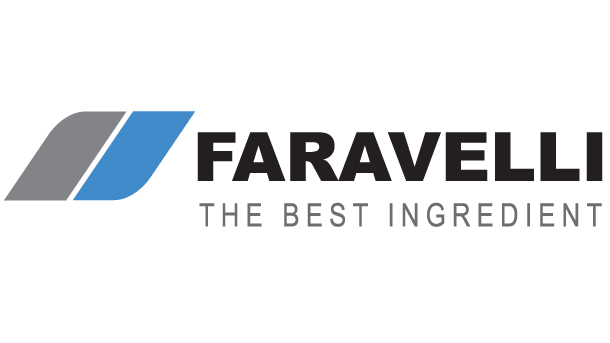Promotional Features
Microencapsulation, a technology to preserve Omega 3 with Italian expertise
In recent years there has been a rising interest in omega 3-6-9 fatty acid oils and increasing awareness of the link that exists between them and our health.
Omega-3 fatty acids are a type of polyunsaturated fats considered essential because the human body is not able to synthesize them in sufficient quantities to meet its needs. The progenitor of the Omega-3 family is alpha-linolenic acid (ALA).
Their properties are associated with beneficial effects on the health of the cardiovascular system and nervous system; also, EFSA (the European Food Safety Authority) has authorized the use of the nutrition claim that ALA helps maintain normal blood cholesterol levels.
After being taken, alpha-linolenic acid is converted into other polyunsaturated fats - EPA (eicosapentaenoic acid) and DHA (docosahexaenoic acid) - which are the biologically active Omega-3s responsible for the benefits associated with these fatty acids.
Omega-3 rich foods are very diverse. Plant-based sources - rich in ALA - include nuts (particularly walnuts, minus almonds), flaxseed and flaxseed oil, canola oil, soybeans, soybean oil, chia seeds and green leafy vegetables.
The most important animal sources - rich in EPA and DHA - are fish, fish oil and cod liver oil.
EPA and DHA can be found in molluscs, crustaceans, krill oil, microalgae oil and in foods and beverages fortified with Omega-3 (i.e. to which these Omega-3 fats have been specifically added) such as pasta, cereals, fruit juices, milk (even artificial milk), yogurt or eggs from hens fed with Omega-3 enriched feed.
Although Omega 3-6-9 fatty acids are widely presented in nature, it is still hard to intake the recommended daily dosage.
Difficulties from bioavailability and sensory acceptability may be obstacles to the prevalent application of omega-3-6-9 fatty acids in food products: because of their unsaturated nature, they are chemically unstable and susceptible to oxidation to produce free radicals, unpleasant tastes and off-flavors, which are deemed to negatively affect the shelf-life, sensory properties and overall acceptability of the food products.
Unfortunately, the body cannot produce enough EPA and DHA to meet its needs. In fact, to do so, it must first convert ALA into EPA, but this reaction is only 5% efficient. A second step converts EPA to DHA, but the efficiency of the conversion of ALA into EPA plus DHA is less than 0.4%, and less than 0.1% of the ALA consumed is converted by the human body into DHA.
A technology to preserve Omega 3: microencapsulation
Microencapsulation is a technology very well known in industrial processes and in the field of human food/pharma nutrition. It is a great approach to increase the effectiveness of the active principles, protecting them from oxidative deterioration and to improve their ingredient properties (e.g., handling and sensory).
Spray drying is the most used technique to develop microcapsules.
Italian expertise in microencapsulation
The Italian company SILA is an expert in this field. Founded in 1998, the company has grown through continuous investments in R&D, in new production facilities and technological innovations.
SILA today covers the manufacture of target and slow-release products for the industry of animal/ human nutrition and keeps on developing close working relationships with multinational partners
The company is a recognized expert in industrial processes of microencapsulation.
With this technology, small particles of solid or liquid substances are able to be coated in order to safeguard the effectiveness and the complete absorption in the intestine through a controlled & targeted release.
SILA works on lab research to coat and stabilize:
- polyunsaturated fatty acids, omega 3 and omega 6 (P.U.F.A)
- vitamins
- organic/inorganic acids
- amino acids
- essential oils
- trace elements
in a target and slow-release lipid matrix.
Benefits offered by microcapsuled Omega 3
There are many benefits offered by microencapsulation of Omega 3.
Thanks to the protective lipophilic coating, microencapsulated Omega 3 preserves the integrity of the nutrient from humidity and the acidity along the various intestinal tracts; it ensures a slow release of the contents, increasing the dose efficiency; the active ingredient is distributed with a large active surface all along the digestive tract due to its particular morphology; it also preserves the stability of the product exposed to environmental factors, like light.
Studies have shown that microencapsulation can significantly increase the absorption of active substances compared to non-microencapsulated Omega 3.
The absolute quality and the complete safety of SILA products is constantly verified by the R&D staff through sophisticated stability studies - such as in vivo amino acid tests, acidifying tests, and iteration of existing
formulations – particularly focusing on stability of microencapsulated acidifiers, liposoluble and hydro soluble microencapsulated vitamin stability and stability of polyunsaturated fatty acids, omega 3 and omega 6 (P.U.F.A)
Centesimal analysis
Determination of physical characteristics: granulometry and specific weight.
Active ingredient content: liposoluble vitamins (A, D3, E, K ), hydro soluble vitamins (C and vitamins from group B), organic acids.
Contamination analysis: micro toxins and additives.
Determination of protein fraction: amino acid composition.
Metal content: cobalt, chrome, iron, magnesium, manganese, potassium, copper, selenium, zinc
Determination of fats: acidity, pH, melting point, iodine value, peroxide value, volatile fatty acids and Kreiss test (on fat or the lipid fraction)
Determination of ash, protein, fat, fiber, water and sugar
Their R & D Laboratory offers a range of unique services for quality and competence, recognized by major Research Institutes with whom they collaborate. SILA guarantees the reliability of its products through careful stock management, with timely loading and unloading checks, and rigid controls of incoming goods in storage and shipment. The distribution of the products takes place with the use of affiliated carriers to offer customers the highest attention prior to and after delivery.
SILA microencapsulated Omega 3 is ideal for veterinary products and human nutrition.
SILA microencapsulated Omega 3 are distributed within the North American market by Faravelli, Inc, the US branch of Faravelli, an Italian company and global distributor of ingredients and raw materials, founded in 1926.
References
Encapsulation of omega 3-6-9 fatty acids-rich oils using protein-based emulsions with spray drying - C. Chang, Michael T. Nickerson and www.silaonline.com




